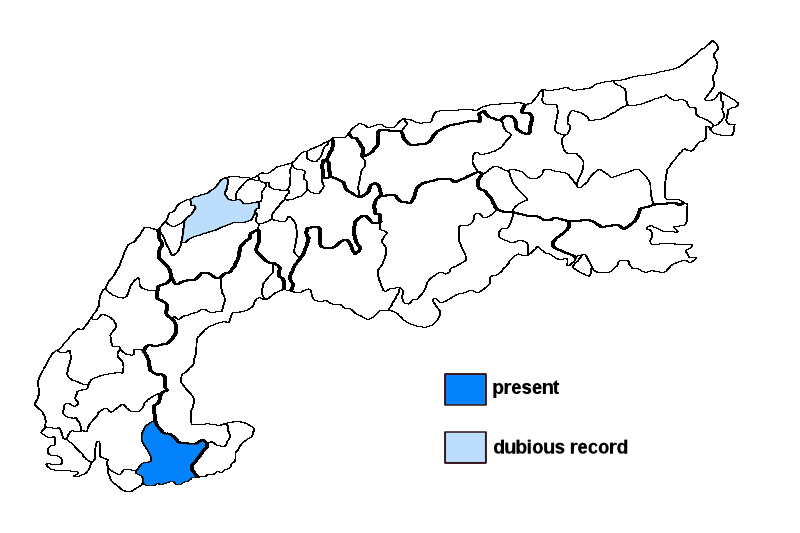Strigula phaea (Ach.) R.C. Harris
Syn.: Arthopyrenia virella (G. Merr.) Zahlbr. nom nud., Porina cineriseda Müll. Arg., Verrucaria cineriseda Nyl. nom. nud., Verrucaria phaea Ach.
Lichenised.
Substrate: bark
Altitudinal distribution: submediterranean/colline belt (potential vegetation: mixed deciduous forests dominated by Quercus and Carpinus)
Note: a species with a greenish grey, thin, episubstratic thallus, strongly protruding ascomata (0.2-0.35 mm in diam.) at least partly covered by a thin thalline layer, 8-spored, subcylindrical, fissitunicate asci, 1-septate, fusiform ascospores (c. 9-13 × 2.5-4 μm) provided with a thin perispore, protruding macropycnidia (to c. 15 mm in diam.) with the cavity lined by narrow long conidiogenous cells (to 25 μm long and c. 2.5 μm wide) containing 1-septate, oblong macroconidia (7-9 × 2-3 μm) with terminal perisporal appendages; usually corticolous on deciduous trees in shaded-humid sites; widespread but rare in SW Europe and Macaronesia, most common in the Tropics; very rare at low elevations in the Western Alps; the record from Switzerland needs confirmation.
Switzerland: ?Bern; France: Alpes-Maritimes;





